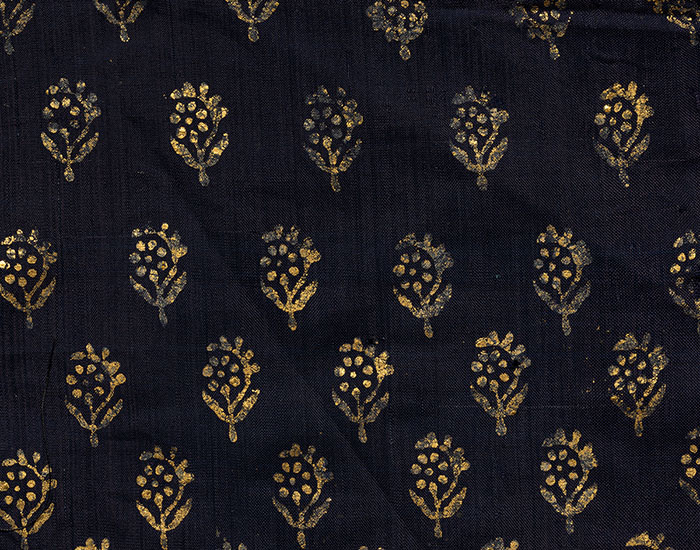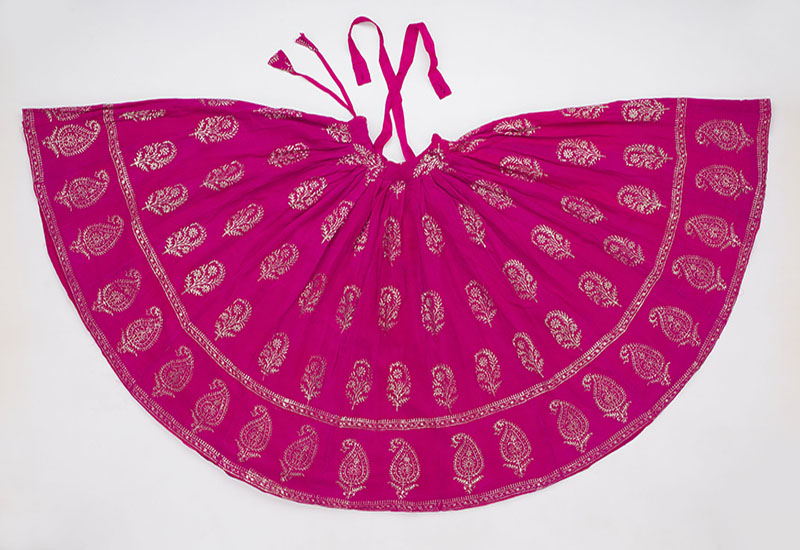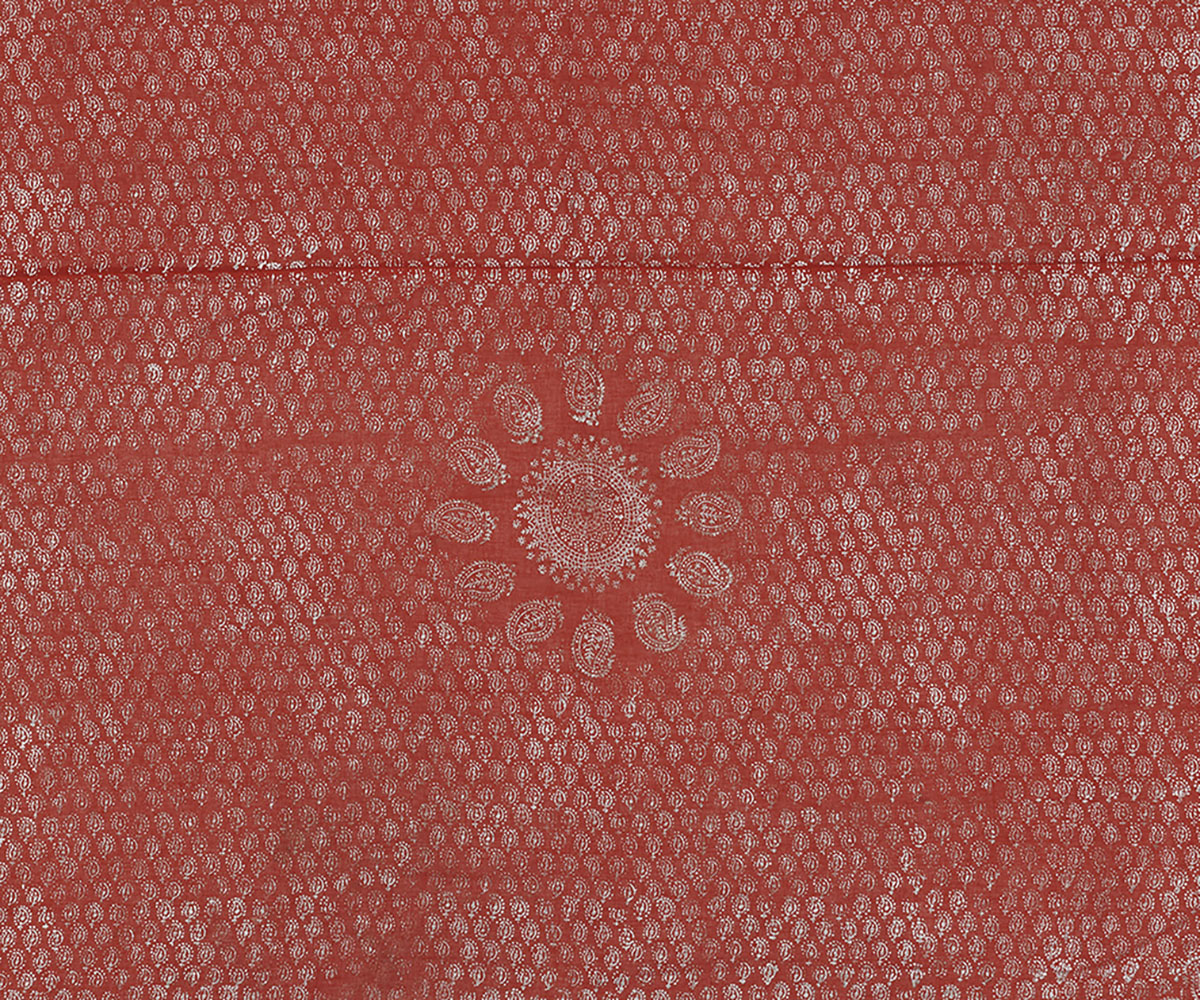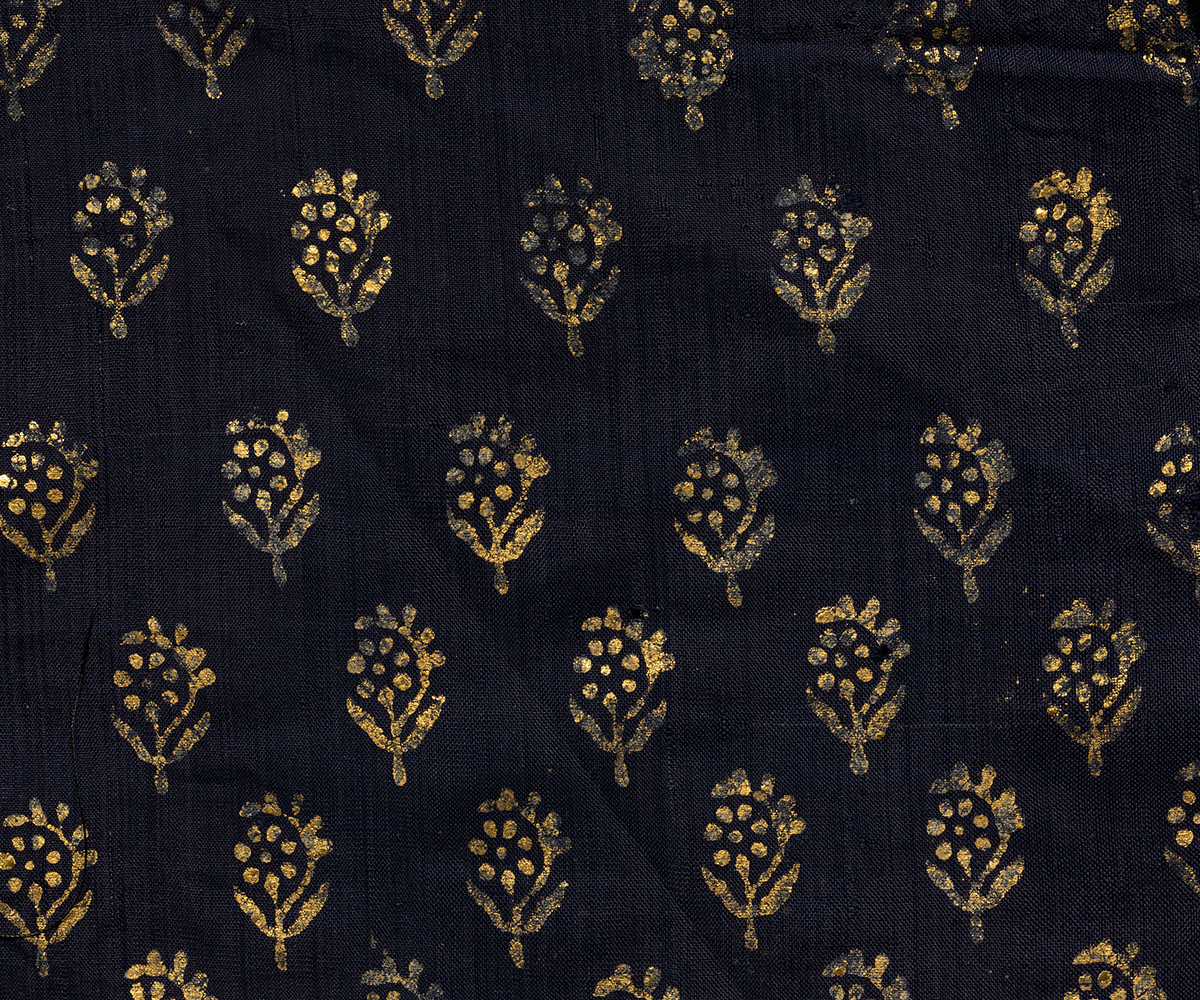
A printing technique that uses flattened gold and silver to embellish fabric, varak is also known as chandi ki chhapai (silver printing) and gold/silver leaf printing which uses gold or silver flattened into thin paper-like consistency. Although not native to India, it is widely understood that the craft reached India through the Mughals. The earliest mention and presence of varak dates to the eighteenth and nineteenth centuries in Jaipur. It was used by kings and rulers in hand-printed flags, tents, canopies, saddlecloths, book-covers and other insignias of power to reflect their prestige.
To prepare Varak, sheets of gold and silver are placed inside a leather pouch, which after being placed on a smooth stone, is beaten with a hammer. The process of beating takes around 2–4 hours for silver, and around 12 hours for gold. At regular intervals, the pouch is rotated so that all the metal sheet is even. Once the sheet is beaten to the required level of thickness, the bundle is removed from the pouch and trimmed down to the preferred size. The varak thus prepared is then transferred to sheets of butter paper with the help of a knife known as falwa. The index finger is tied with a thin leather covering called bandi to prevent the varak from sticking to skin during the transfer. The process of transfer is done with great care for even a wisp of breath could blow away the fine metal leaf. Once finished, the papers holding the leaves are folded in halves for safekeeping.
Varak is applied on the textile through transfer using blocks. The traditional process uses a gum derived from the Saresh tree known as saras, which was stamped on the fabric using blocks. Varak was applied while the gum was moist and pressed used a wrapped muslim cloth to make it stick. It was then smoothened and burnished by rubbing a stone such as agate. To prevent the silver/gold from tarnishing, a layer of waterproof lacquer was painted over it. Besides blocks carved out of wood, brass blocks are also used in case the binding material is viscous paste rogan.
Varak was and continues to be used in holy shrines and temples. Due to its usage of precious metals and fragile finish, it was printed on far fewer garments although despite this, it was seen as an easier alternative to gold brocades. From nineteenth century onwards, varak made its way to garments such as ghagras (skirts), sarees, odhnis (veils) and turbans. It also became a distinctive part of textiles such as chanderi and banarasi sarees and dupattas. Varak is extremely rare today, and its practice is limited to a couple of printers in Jaipur.
First Published: April 21, 2022
Last Updated: July 26, 2023




